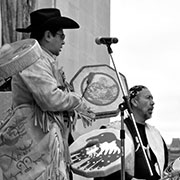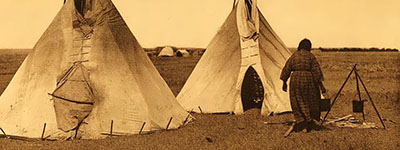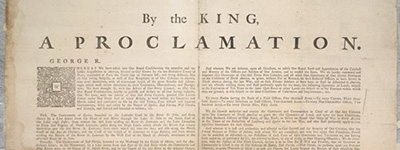ABORIGINAL HISTORY
TSILHQOT'IN - NATION

Haida history begins with the arrival of the primordial ancestresses of the Haida matrilineages in Haida Gwaii some 14,000 to 19,000 years ago. These include SGuuluu Jaad (Foam Woman), Jiila Kuns (Creek Woman), and KalGa Jaad (ice woman). The Haida canon of oral histories and archeological findings agree that Haida ancestors lived alongside glaciers and were present at the time of the arrival of the first tree, a lodgepole pine, in Haida Gwaii. For thousands of years since Haida have participated in a rigorous coast-wide legal system called Potlatch. After the Islands wide arrival of red cedar some 7,500 years ago Haida society transformed to centre around the coastal "tree of life". Massive carved cedar monuments and cedar big houses became widespread throughout Haida Gwaii.
The first recorded European contact was in 1774 with Spanish explorer Juan Perez. However, some academics believed that there was contact prior to that with Russian explorers as early as 1741 and even earlier with Spanish ships originating from the west coast of Mexico in the 1500s. The name of a principle village Massett is actually a Spanish surname and was gifted by a damaged sailing ship rescued and repaired with the help of Auuxaada (Haida villages located along the mouth of Massett Inlet).
Haida Gwaii's pre-contact population was estimated towards the tens of thousands by the Council of the Haida Nation. A similar estimate was recorded by early fur traders. The Haida used large canoes to navigate, trade and even raid all along the west coast of Canada. Although they had gone on expeditions as far south as California and across the Pacific, confrontations were minimal. European transgressions of Haida law such as attempts to mine gold were responded to with appropriate force by Haida authorities. Despite this, smallpox introduction first by Russian and then intentionally[citation needed] by Canadians resulted in population loss over three plagues finally down to 588 people by 1915. It was not until then that European settlers were confident enough to settle on Haida Gwaii. Over time Europeans increasingly infringed on Haida territories. In 1911 Canada and British Columbia rejected a Haida offer whereby in exchange for full rights of British citizenship Haidas would formally join the Dominion. Haida people then gathered in two communities and armoured themselves against the intrusion of foreign people and policy. The Canadian policy was prolonged and expansive and included seizing children into residential schools located thousands of kilometres away from Haida Gwaii. Such efforts to erode Haida authority were never fully successful. The Truth and Reconciliation Commission of Canada was officially launched in 2008 with a plan to help people by exposing the terrible information about the system that residential schools were a part of and in hopes of working toward reconciliation throughout Canada.
Some of the things that living Haida are known for is political resilience. This persistent expression is also seen in their assertive and direct approach causing anthropologist Diamond Jenness to compare them to Vikings. The coastal raiding activities in specialized ocean-going vessels also parallel cultural traditions of Viking culture.
In British Columbia, the term "Haida Nation" often refers to Haida people as a whole however, it also refers to their government, the Council of the Haida Nation. While all people of Haida ancestry are entitled to Haida citizenship, including the Kaigani who as Alaskans are also part of the Central Council Tlingit Haida Indian Tribes of Alaska government. The Haida language has sometimes been classified as one of the Na-Dene group, but is usually considered to be an isolate. In spite of the de facto banning of the Haida language with the introduction of residential schools and the enforcement of the use of English language, Haida language revitalization projects swung into action in the 1970s and continue to this day. It is estimated that there are only 3 or 4 dozen Haida speaking people with almost all of them being the age of 70 or older.
Haida society continues to produce a robust and highly stylized art form, a leading component of Northwest Coast art. While artists frequently have expressed this in large wooden carvings (totem poles), Chilkat weaving, or ornate jewellery, in the 21st century, younger people are also making art in popular expression such as Haida manga.
In 2018 the first feature-length Haida-language film, The Edge of the Knife (Haida: SG̲aawaay Ḵʹuuna), was released, with an all-Haida cast. The actors learned Haida for their performances in the film, with a 2-week training camp followed by lessons throughout the 5 weeks of filming. Haida artist Gwaai Edenshaw and Tsilhqot'in filmmaker Helen Haig-Brown directed, with Edenshaw and his brother being co-screenwriters, with Graham Richard and Leonie Sandercock.
In spring 2020, "Now is the Time", a documentary by Haida Film maker Christopher Auchter was selected to screen at Sundance film festival.
General Information
Area: Cariboo Region of British Columbia
Group: Tsilhqot'in
Linguistics: Chilcotin language
ArticlesCite Article : www.aboriginalhistory.ca/Nations/Haida/Haida.ca

 Tsilhqot'in Information
Tsilhqot'in Information 

